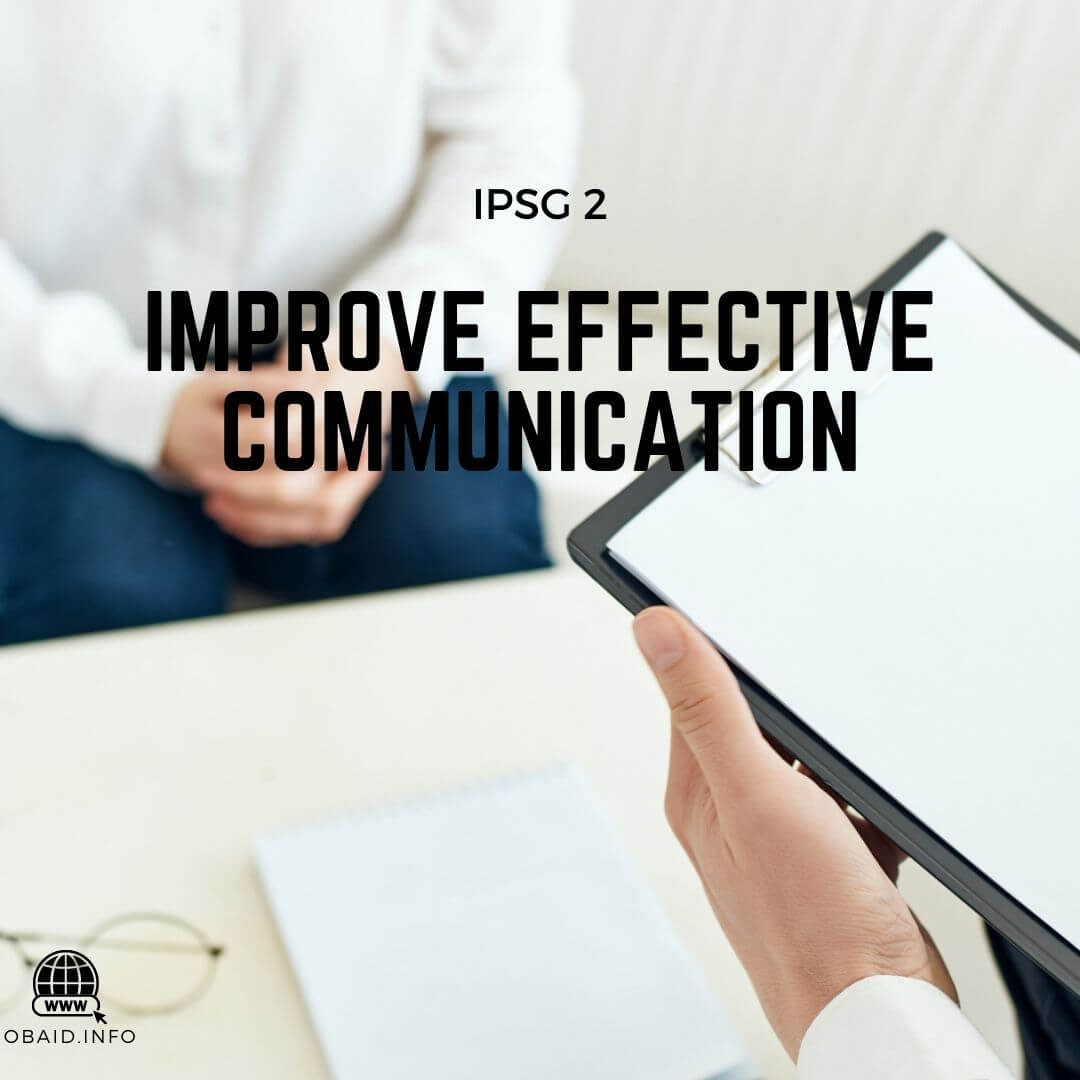The Joint Commission Patient Safety Goals
There are certain goals “The Joint Commission patient safety goals” first to identify patients’ safety, dangers and risks, you must have a clear risk assessment. So, this should be clear, for example risk of fall, we need to identify patients correctly, but at least by two ways.
Improve communication, for example, communication over the phone. You take the results of the of a patient for example, then you read it back to the lab technician, and then the lab technician confirms that what you have written or recorded is correct to cross check and to double check that what you have heard and written is correct.
This also applies to the instruction from the consultant over the phone, for example, you have to be very clear about which patients you are talking about what is the diagnosis what is exactly and if instruction is given by the consultant, or by the senior, they should really sit down and read back to the consultant or to the senior to make sure that what you have written and recorded correct.
Prevent infection by hand cleaning, post-op infection by antibiotics, catheter change, center line precautions, it’s very important and the infection control is important and it’s one of the main causes of complications and perhaps can be classified as medical error if it is proven that the practitioner did not comply with the infection control measures.
Prevent mistakes at surgery:
With the checklist that we have just revised in the previous post with the WHO also among the safety goals is using device alarm to make sure that alarms and medical equipments are heard and checked quickly, for example, Oximeter, the ECG and other equipment, you need to make sure that they are working and functioning and have the alarms and going use medicine correctly and safely. And we have just described how to do that. Label all medications, even those in a syringe, they should have a clear label on what is the medication and who is the patient … etc.
Take extra time with patients who have been prescribed anticoagulants and chemotherapeutic agents. This is very important because these medications have and could lead to adverse events and it’s very important to make sure that you are dealing with the right patient with the right dose and the right form, especially with high risk medications.
It’s also to prevent nosocomial infections. As we said, hand washing should be routine before and after visiting each patient.







